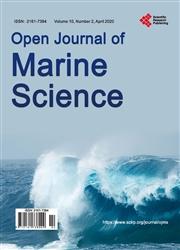Health Risk Assessment Due to Heavy Metals Exposure via Consumption of Bivalves Harvested from Marudu Bay, Malaysia
引用次数: 12
Abstract
Concern over health risk from consumption of bivalves originating from Marudu Bay is escalating due to the rapid agricultural development surrounding the bay. This has motivated us to estimate the health risk index (HRI) of heavy metals from four commercially important and highly exploited bivalve species which are abundant in the bay. Samples (n = 30) of green mussel (Perna viridis), Asiatic hard clam (Meretrix meretrix), Pacific oyster (Crassosstrea gigas) and marsh clam (Polymesoda expans) were acquired from fishermen in Kg. Teritipan, Marudu Bay. These bivalves were analyzed for heavy metals content using the Inductively Couples Plasma-Optical Emission Spectroscopy (ICP-OES). The study found that the mean contents of Arsenic (As) and Manganese (Mn) in all analyzed bivalves exceeded the permissible limits as well as copper (Cu), lead (Pb) and zinc (Zn) in Pacific oyster, and Zn in marsh clam. It was also noticed that consumption of different bivalve species may bring about health risk from different metals as indicated by varied Total Hazard Index (THI) values. Consumption of the four bivalves was noticed to promote high health risk from As intoxication. Although metal pollution index (MPI) analysis revealed that the bivalves from the bay are currently not seriously impacted by heavy metal pollution, vigorous efforts should be taken to preserve the natural condition of the bay for years to come. There are several ways to minimize health issues from bivalve consumption which include keeping the bivalve natural habitat away from heavy metals pollution by strictly enforcing environmental laws and policies, establishing zones for bivalve fisheries, monitoring heavy metals concentration in bivalve on a regular basis and making depuration process a compulsory requirement in every seafood restaurant throughout the country.因食用马来西亚马鲁都湾出产的Bivalves而暴露于重金属的健康风险评估
由于Marudu湾周围农业的快速发展,人们对食用源自Marudu海湾的双壳贝类健康风险的担忧正在加剧。这促使我们从海湾中丰富的四种商业上重要且高度开发的双壳类物种中估计重金属的健康风险指数(HRI)。绿贻贝(Perna viridis)、亚洲硬蛤(Meretrix Meretrix)、太平洋牡蛎(Crassosstrea gigas)和沼泽蛤(Polymersoda expans)的样本(n=30)是从Marudu湾Kg Teritipan的渔民那里采集的。使用电感耦合等离子体光学发射光谱法(ICP-OES)分析这些双壳类的重金属含量。研究发现,所有分析的双壳类中砷(As)和锰(Mn)的平均含量都超过了允许的限度,太平洋牡蛎中的铜(Cu)、铅(Pb)和锌(Zn)以及沼泽蛤中的锌(Zn。还注意到,不同的双壳类物种的消费可能会带来不同金属的健康风险,如不同的总危害指数(THI)值所示。人们注意到,食用四种双壳类动物会增加砷中毒的高健康风险。尽管金属污染指数(MPI)分析显示,海湾中的双壳类目前没有受到重金属污染的严重影响,但应在未来几年大力保护海湾的自然条件。有几种方法可以最大限度地减少双壳类消费带来的健康问题,包括通过严格执行环境法律和政策,建立双壳类渔业区,定期监测双壳贝类中的重金属浓度,并将净化过程作为全国每家海鲜餐厅的强制性要求。
本文章由计算机程序翻译,如有差异,请以英文原文为准。
求助全文
约1分钟内获得全文
求助全文

 求助内容:
求助内容: 应助结果提醒方式:
应助结果提醒方式:


